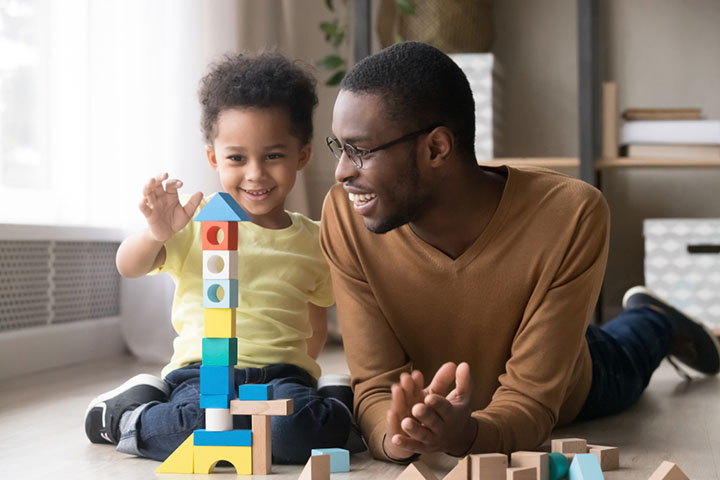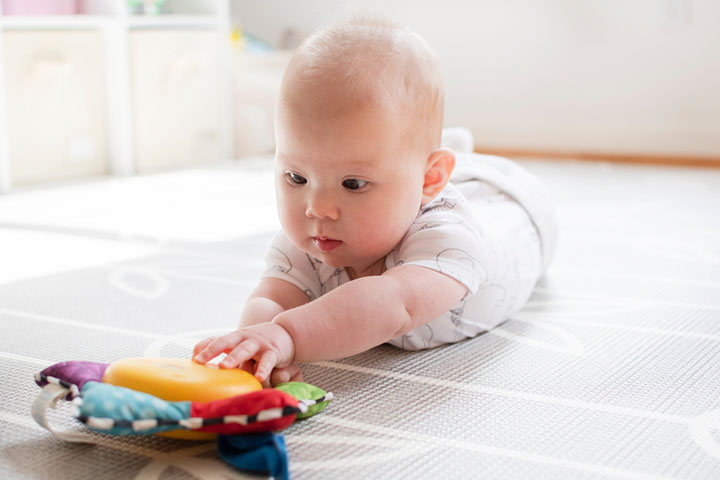
Image: Shutterstock
Welcoming a newborn into your life brings a world of wonder and responsibility. As your little one grows, nurturing their development becomes a joyful and important journey. Understanding the key areas of growth and engaging in age-appropriate activities lays the groundwork for their future. Let’s explore how you can optimize your newborn’s development through various stages. Read on!
Key Areas Of Development
Image: Shutterstock
1. Physical Development
This involves the growth of muscles and coordination. From grasping objects to crawling and eventually walking, these milestones mark their physical progress.
2. Cognitive Development
It’s about how your baby learns, thinks, and solves problems. Stimulating their senses, encouraging exploration, and introducing them to new experiences fosters cognitive growth.
3. Social And Emotional Development
Building trust, forming attachments, and understanding emotions are pivotal to their emotional development. Your interactions and responsiveness play a significant role in shaping their social and emotional well-being.
4. Language Development
It’s not just about words; it’s about communication. From cooing and babbling to eventually speaking, your interactions and conversations contribute significantly to your toddler’s language acquisition.
Activities For Different Age Groups To Optimize Development
Image: Shutterstock
Newborns (0-3 months)
1. Skin-To-Skin Contact
Holding your baby skin-to-skin is not just about physical closeness; it’s a powerful way to bond. It helps create a sense of security and familiarity, fostering a deep emotional connection between you and your newborn.
2. Sensory Stimulation
Newborns discover the world through their senses. Introducing gentle stimuli like soft toys, rattles, or soothing music helps stimulate their senses of touch, sight, and hearing. Moreover, sensory stimulation plays a vital role in your baby’s brain development. It helps create neural connections, aiding in cognitive development and sensory processing.
3. Tummy Time
Placing your baby on their tummy while they are awake helps strengthen their neck muscles and core. This strengthens the muscles needed for lifting their head, a crucial step toward developing head control.
Infants (3-6 Months)
1. Reading And Talking
Engaging in conversations and reading colorful books stimulates your baby’s auditory and visual senses. The variety of colors, shapes, and patterns in books captures their attention, aiding in visual development. Also, even though they may not understand the words, hearing your voice and the rhythm of conversation lays the groundwork for language acquisition.
2. Reaching And Grasping
Offering toys within their reach encourages reaching out and grasping objects. This activity enhances their hand-eye coordination and fine motor skills as they learn to manipulate and hold onto objects. As they reach for and grasp objects, they begin to understand cause and effect. They learn that their actions can make things happen, fostering their cognitive development.
3. Mirror Play
Showing your baby their reflection in a safe mirror helps them start to recognize themselves. It introduces the concept of self-awareness, a crucial aspect of their social and emotional development. The mirror offers visual stimulation, capturing their attention and engaging their curiosity as they explore the fascinating image of themselves.
Young Explorers (6-12 Months)
Image: Shutterstock
1. Encourage Crawling
Creating a safe space for your little one to explore and crawl aids in their physical development. Crawling strengthens their muscles and improves coordination, laying the groundwork for future mobility. It also helps babies understand spatial relationships and navigate their environment. It allows them to explore and learn about the world around them from a different perspective.
2. Play With Blocks And Stacking Toys
Playing with blocks and stacking toys enhances hand-eye coordination as they grasp, manipulate, and stack objects. It encourages precise movements and control of their fingers and hands. Figuring out how to stack blocks or fit shapes together introduces basic problem-solving skills. It helps them understand concepts like cause-and-effect and trial-and-error.
3. Sing And Dance
Music and movement sessions help develop their sense of rhythm and coordination. Babies sway, clap, and move to the beats, enhancing their ability to coordinate their movements with sounds.
Growing Toddlers (12-24 Months)
Image: Shutterstock
1. Pretend Play
Encourage imaginative play with toys like dolls, play kitchens, or toy cars to stimulate their creativity and social skills.
2. Simple Puzzles And Shape Sorters
These activities introduce problem-solving and fine motor skills.
3. Outdoor Exploration
Let them explore nature, play in sand, or engage in simple outdoor activities to stimulate their senses and physical development.
Your Role In Nurturing Development
Image: Shutterstock
1. Be Present
Your presence matters the most. Interact, talk, sing, and respond to your baby’s cues. Your responsiveness builds trust and security.
2. Follow Their Lead
Pay attention to their interests and cues. If they seem engaged in a particular activity, encourage it further.
3. Create A Safe Environment
Ensure you create a safe and stimulating environment where they can explore and learn without hazards.
4. Celebrate Milestones
Each milestone, whether big or small, is a cause for celebration. Encourage and cheer on their achievements.
Nurturing your child’s development is a delightful journey filled with moments of discovery and growth. Engaging in activities tailored to their age and developmental stage lays the foundation for their overall well-being. Your love, attention, and guidance play a vital role in shaping their journey toward a bright and fulfilling future.

















